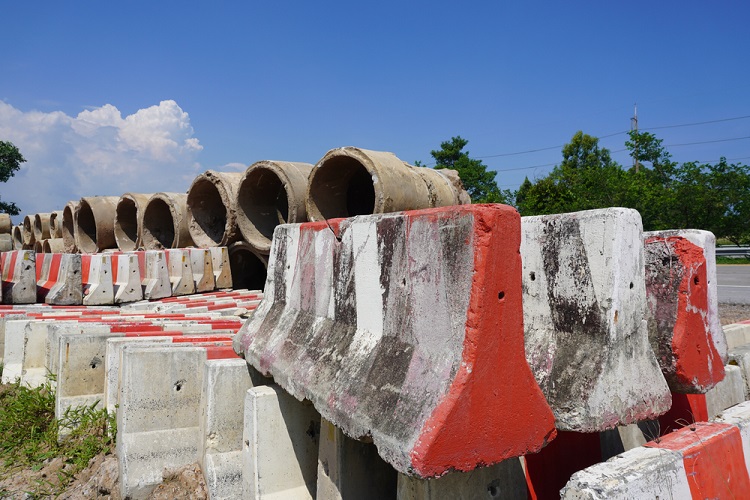In today’s fast-paced and risk-conscious world, infrastructure planners, construction and business firms, and public safety authorities increasingly rely on robust physical solutions to mitigate risk and ensure the smooth functioning of operations. Among these, concrete barriers stand out as a practical, reliable, and strategic investment. These heavy-duty installations are not just passive blocks—they are engineered tools for traffic control, asset protection, and operational safety across diverse sectors.
Table of Contents
Core Applications of Concrete Barriers
Traffic Safety and Roadway Management
Concrete barriers are a cornerstone of roadway safety strategies. Deployed along highways and arterial roads, they act as essential dividers to prevent lane crossover incidents and reduce the severity of vehicular collisions. Their design helps deflect vehicles back onto the roadway, minimizing damage and reducing accident-related downtime. Governments and private road operators alike invest in these barriers to meet safety compliance and reduce liability.
Infrastructure and Construction Protection
In the construction sector, particularly on projects adjacent to active roadways or within urban settings, concrete barriers serve as both protective fencing and safety assurance. They provide a durable buffer between workers and live traffic, safeguarding human resources and expensive equipment. Their presence on-site is a visible signal of risk mitigation and professional site management.
Site Security and Controlled Access
Organizations with high-security needs—including logistics hubs, industrial facilities, airports, and data centers—employ concrete barriers to secure perimeter zones and manage vehicle entry. Their robust structure resists forced access, making them a preferred solution for both temporary and permanent security planning. Unlike temporary fencing or lightweight barricades, concrete barriers are a physical deterrent with long-term value.
Public Events and Crowd Management
For event planners, city councils, and logistics teams managing large gatherings, crowd and vehicle separation is a logistical priority. Concrete barriers are deployed to create secure pedestrian zones, vehicle-free walkways, and controlled access points. Their use demonstrates a proactive approach to safety, often mandated by local authorities for high-capacity public events.
Types of Concrete Barriers and Use Cases
Jersey Barriers
Among the most commonly used, Jersey barriers are modular and sloped in design, optimized for reducing vehicular impact severity. They are widely utilized on highways and in construction projects where deflection performance is a priority.
F-Shape Barriers
An advanced alternative to Jersey barriers, F-shape barriers offer enhanced safety for modern vehicle designs, especially compact and passenger cars. These are frequently specified in road upgrade projects due to their improved crash performance.
Constant-Slope Barriers
With a uniform slope, constant-slope barriers are particularly valued where road resurfacing or elevation changes occur. Their consistent profile ensures reliable performance over long-term deployments.
Temporary Vertical Concrete Barriers (TVCBs)
For short-term projects or mobile security needs, TVCBs provide a flexible and efficient solution. Easily transportable and often equipped with lifting slots, these barriers are suitable for events, temporary road closures, and fast-paced construction environments.
Strategic Advantages for Businesses
- Operational Safety: Whether on a roadwork site or facility perimeter, concrete barriers reduce workplace risks and support compliance with safety regulations.
- Asset Protection: Heavy machinery, infrastructure, and even intellectual property benefit from the physical defense these barriers provide.
- Cost Efficiency: Though heavy and initially more costly to transport, concrete barriers offer longevity and require virtually no maintenance, maximizing ROI over time.
- Brand Reputation: Clients, stakeholders, and the public perceive the use of high-grade safety equipment, such as concrete barriers, as a mark of professionalism and responsibility.
Implementation Considerations
Businesses considering the deployment of concrete barriers should account for:
- Logistics: Due to their weight, installation requires cranes or forklifts, and appropriate ground surfaces must be prepared.
- Compliance: Ensure the barriers meet national or local safety standards, particularly for use on public roads or regulated job sites.
- Visibility Enhancements: Adding reflective panels or high-visibility paint is recommended to ensure safety during low-light conditions.
Conclusion
For businesses operating in construction, logistics, event planning, or infrastructure development, concrete barriers offer a strategic solution for safety, control, and risk management. Their versatility and reliability make them a valuable asset in protecting people, assets, and operations. As urban environments grow and safety standards tighten, the presence of concrete barriers reflects a proactive and professional approach to public and occupational safety.

